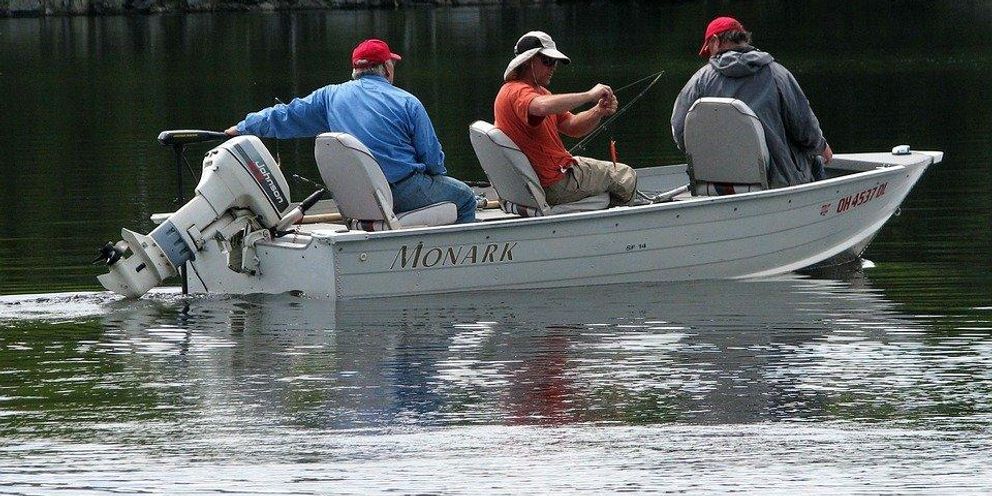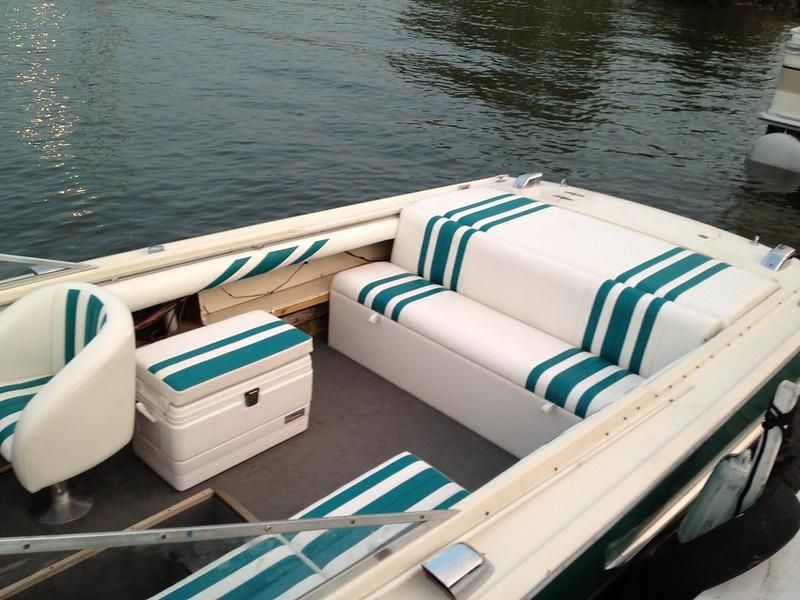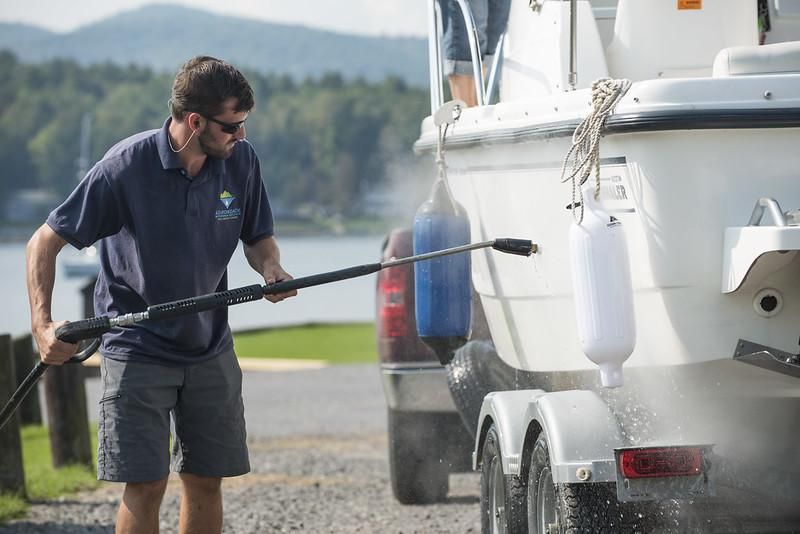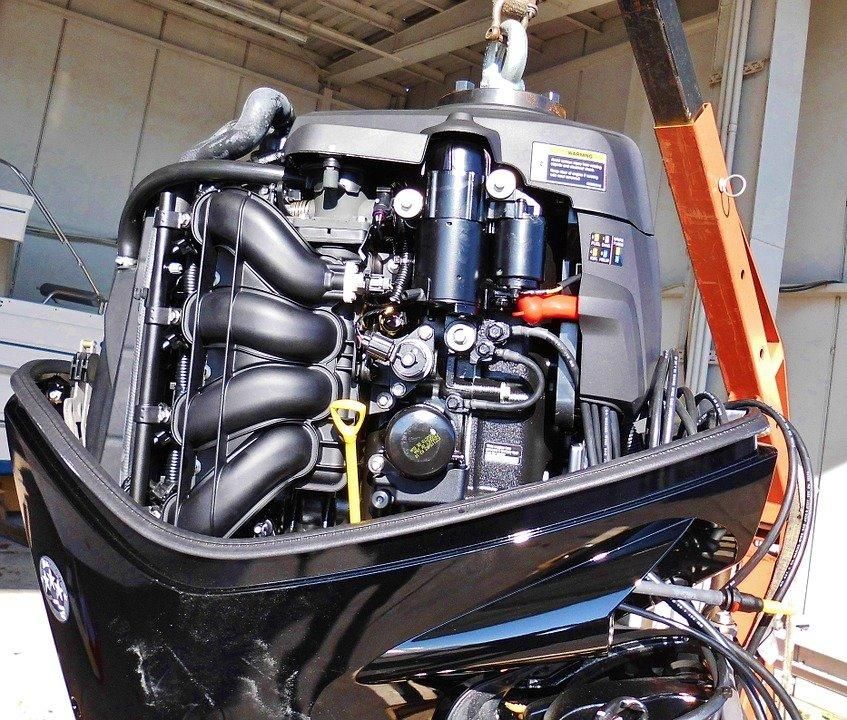
Tips for Maintaining Your Fishing Boat
Image Credit: Bernell / Pixabay
Maintaining your boat is somewhat similar to automobile maintenance. Your checklist will include some of the usual essentials that you need to keep up with. You might consider performing the basic maintenance on your own, but in some cases, you may call for expert assistance. Your everyday maintenance checklist will entail engine checks, boat's hull, plumbing and HVACs, electrical systems, moving parts, and canvas and upholstery.
Decades ago, your maintenance checklist would have been longer because of the wooden boat material. Luckily, this has changed today since most boats are made from fiberglass. If you're a new boat owner or are simply interested in knowing more about maintaining your fishing boat, this post will take you through everything you need to know about keeping your boat in good condition.
Regular boat maintenance is key to ensuring that you use your boat for years. This means that you can schedule maintenance after each trip. You can also perform maintenance after a specific period. It all depends on how frequently you use your boat.
To ensure you understand what good maintenance entails, let's start with the basics of how to clean your boat.
Cleaning Your Boat
Effective boat cleaning demands that you focus on the following areas:
- Interior surfaces (fiberglass, carpet, cushions, vinyl, head)
- Exterior surfaces (gel-coat, canvas, hull)
- Engine
- Teak

Image Credit: Chadsci / flickr
Cleaning the Interior
Every part of your boat's interior has specific needs, meaning you will clean these sections separately. If your fishing boat has a carpet, you should first clean this area using a vacuum. This will ensure that you get rid of dirt before you get down to scrubbing. Use soap, brush, and water to scrub the carpet thoroughly. For a trailer boat, consider parking it on an incline position so that dirty water drains off easily. Once you're happy with the scrubbing, you can then speed dry using fans or the boat's air conditioner.
Cleaning the Fiberglass
Non-slip fiberglass is found in most modern boats. However, this area shouldn't be cleaned like any other fiberglass parts. Waxing the surface would make the surface slippery, which defeats the importance of having a non-skid surface. Use soap, a stiff bristle brush, and water to scrub the fiberglass. If you're dealing with tough stains, use a cleaner with bleach. However, ensure that the surface is rinsed well immediately after wiping off the stains. The last thing you need is for the cleaner to corrode the boat's fiberglass surface.
After scrubbing the fiberglass as desired, you can use a non-skid treatment to give it the perfect shine. Typically, these treatments aren't wax. They contain polymers that shine the fiberglass surface without making it slippery.
Vinyl Cleaning
Modern boats have vinyl that has been treated to prevent mildew and mold. As a result, you must avoid using harsh chemicals that can erode this protective layer. Keep things simple here since all you need to do is to use soap and water. Clean the vinyl surfaces gently using a rag. Use a specific vinyl cleaner for areas with tough stains.
Cushions
The boat's cushions should also be cleaned more often since they can become musty with time. Instead of wiping the cushions, clean them well by removing and washing them in cold water. Non-vinyl covers can be machine washed. Ensure you follow the washing instructions if you intend to use a dryer. After thoroughly cleaning the cushion covers, let them dry before putting them on.
Heads
For the boat heads, you can clean them the way you clean your toilets at home. To effectively clean the lines where calcium and scale deposits collect, use vinegar on these lines to ensure that these stains are completely removed.

Image Credit: Adirondack Watershed Institute / flickr
Cleaning the Exterior
Now that you're done with the interior, let's clean the exterior parts. Your checklist will include cleaning the hull and gel-coated surfaces, canvas, engines, teak, and the hull bottoms.
Hull and Gel-Coat Surfaces
The boat's hillsides and other smooth sections need regular maintenance to maintain their shiny look. These areas also need serious protection to prevent potential oxidation. Clean the hull and gel-coat surfaces at least once a month. Use the recommended wax to give the exterior surface a good shine. After every waxing, wash the boat using boat soap.
Hull Bottom
If your fishing boat can be placed on a lift or a trailer, clean the hull bottom the same way you would clean other gel-coated surfaces.
Boat Canvas
Clean the boat canvas every month to get rid of stubborn stains and prevent dirt from collecting on the material. Scrub it using a soft brush and a mild soap and rinse with clean water. From time to time, you may be required to do some thorough cleaning. If the canvas isn't big, you can machine-wash it using baking soda, soap, and warm water.
Boat Cover
Covering your boat with quality boat covers is a crucial but often overlooked aspect of boat maintenance. It is essential for protecting your vessel from harsh weather, preventing the accumulation of dirt and debris, and reducing the growth of mold and mildew due to moisture.
When choosing a boat cover, consider factors like the material's durability and UV resistance, the fit of the cover, built-in ventilation, and ease of use. It's important to select a cover that fits snugly, is made of high-quality materials, and has proper ventilation to promote air circulation. Before covering your boat, ensure it is thoroughly cleaned to avoid dirt causing damage while covered. Secure the cover properly to prevent it from coming loose and check on your boat periodically to ensure it remains in good condition.
Regular use of a well-chosen boat cover is a simple yet effective way to extend the life and maintain the appearance of your boat, making it a wise investment for any boat owner.

Image Credit: reverent / Pixabay
Engines
Of course, this is one area that you shouldn't overlook. The engine area should be checked more often whether your fishing boat is inboard or outboard-powered. For an outboard-powered engine, wax the exterior and the cowl, then rinse with water and soap. Clean the engine area the same way you would clean the car's engine.
Regular maintenance requires that you get rid of grime and dirt for an inboard engine. Remember that some electrical wires might be corroded if you use chemicals and cleaners. Hence, you should be wary of the cleaning agents you use here. If you're uncertain about cleaning the engine, it's best to leave the job to cleaning experts.
Teak
Cleaning the teak is perhaps the simplest area to maintain compared to other surfaces. All you have to do here is to scrub the surface with soap and water regularly. If it gets to a point where you notice that the teak looks molten, you can use an acid-based teak cleaner. Depending on the stains you're dealing with, you can choose either a mild or a strong cleaning agent. Ensure you remove the teak from the boat before using these cleaners. They are acidic, and spills could lead to unwanted damage.
Fishing Boat Washing Tips to Keep in Mind
Getting in and out of the fishing boat might be challenging, especially if you have a large boat. Therefore, it helps to have a step ladder. The ladder can help you reach higher places if the boat sits on a trailer.
Use a long-handled brush to give you an easier time reaching high areas. When using hard stiff brushes on tough stains, be gentle to avoid scratching the boat's surfaces or damaging the fabric.
If your fishing boat has a removable floor, it's easier to clean these surfaces independently. So, remove the surface and wash them separately. This applies to the marine carpet, decking panels, and so on.
When cleaning the engine compartment, be careful not to let water enter the fuel tanks. Some people use plastic bags to cover this area during cleaning. Again, if you're not confident about cleaning the engine safely, hire an expert to take good care of your engine.
Benefits of Regular Boat Maintenance
You realize that maintaining your fishing boat isn't as difficult as you initially thought. Your boat is like any other machine. You can benefit by making sure that you maintain it the right way. At the end of the day, you want your fishing boat to serve you for years. So, you need to take care of it so it can take care of your fishing needs.
Prolonged Boat Lifespan
Maintaining your boat more often is imperative if you want to use it for a long time. The vessel goes through wear and tear every time you use it. Thus, it makes sense that you invest in maintaining it.
Increased Safety
Operating a faulty boat only exposes you to many water risks. Regular maintenance is key to ensuring you're safe while on the waters. You gain so much peace when you use a well-maintained fishing boat.
Enhanced Performance
Maintaining your engine to operate at its best warrants that you consume less fuel. If this is something that concerns you, then you shouldn't skimp on engine maintenance.
Better Appearance
Your fishing boat is your home away from home. Therefore, giving it a facial uplift through regular cleaning or painting can make your boat appealing. You'll enjoy fishing, and the best part is that you'll enjoy spending time on your boat.
Maintaining your boat doesn't have to be challenging. You should realize that you don't have to perform all the maintenance requirements in a day. You can schedule maintenance by focusing on one area at a time. For instance, if you want to clean the boat, you can clean the interior and leave the exterior for some other time. Prioritize some areas over others. For instance, you should ensure the engine area is checked and cleaned more often. The performance of your fishing boat depends on it. Don't overlook the importance of cleaning your fishing boat because there are many benefits you stand to gain.
Updated